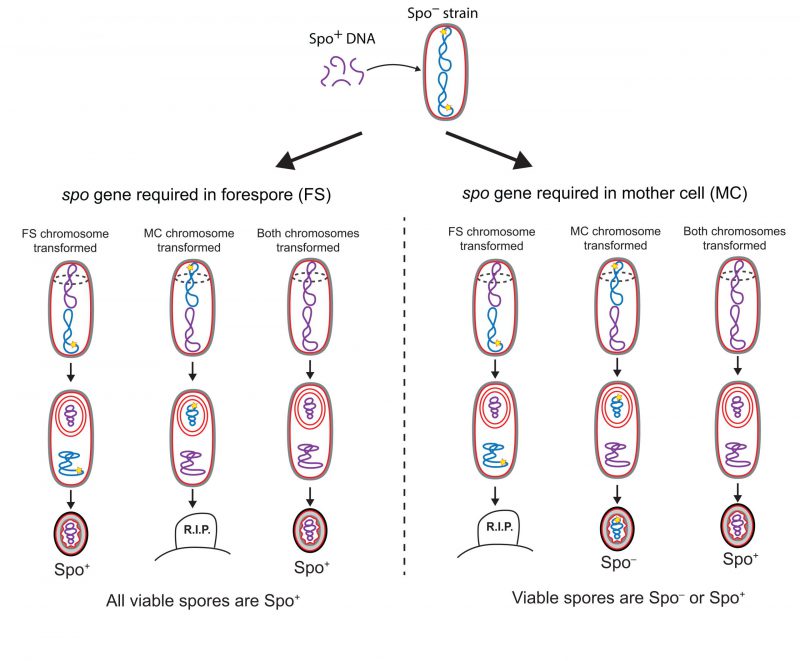Back to article: Milestones in Bacillus subtilis sporulation research
FIGURE 4: Genetic strategy to identify the cell in which a spo gene is required. A Spo− strain with a mutation in a known spo gene (yellow star) is depicted in Stage I (see Fig. 2) with its two chromosomes, one that will be packed into the forespore (upper chromosome) and one that will remain in the mother cell and be destroyed when the mother cell lyses (lower chromosome). The strain is transformed with genomic DNA from a Spo+ strain at the onset of sporulation. Transformed chromosomes are drawn in purple, non-transformed chromosomes, in blue. Either or both chromosomes are capable of being transformed to spo+. If the spo gene is required in the forespore (left panel), transformation of the forespore chromosome to spo+ rescues the process and generates spores that can germinate and go on to sporulate again (left). But transformation of the mother-cell chromosome to spo+ with no accompanying transformation of the forespore chromosome leaves the forespore chromosome spo− so the cells cannot complete the process, and no spores are produced (center). Hence only Spo+ spores are generated if the spo gene is required in the forespore. If the spo gene is required in the mother cell (right panel), transformation of the mother-cell chromosome to spo+ rescues the process (center and right), but only if the forespore chromosome is transformed as well will the spores that are produced be able to germinate into cells that can go on to sporulate again (right). Hence, both Spo+ and Spo− spores can be generated if the spo gene is required in the mother cell.

